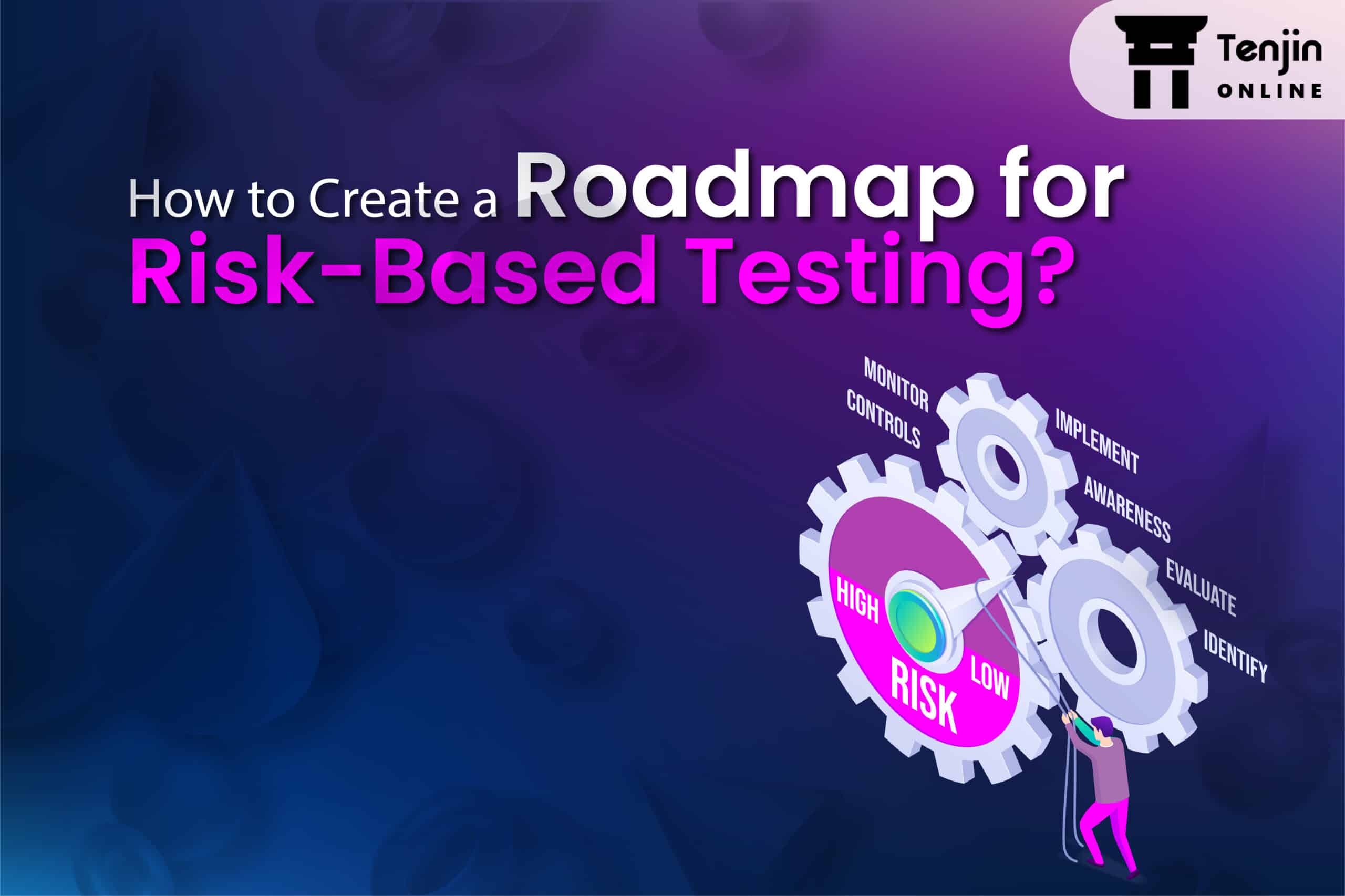
In the world of software development, risk-based testing has become an essential practice. It involves identifying and assessing potential risks associated with a software system, and then designing and executing tests that address those risks. This approach acknowledges that not all software defects have the same impact on the overall quality of the system. Therefore, the goal of risk-based testing is to target the most important risks first and allocate testing resources accordingly.
Risk-based testing is an important part of any software testing process, as it helps to prioritize testing efforts and ensure that the most critical areas of the system are thoroughly tested. However, creating a roadmap for risk-based testing can be a challenging task. In this article, we will discuss why is it important to create an effective roadmap for risk-based testing and the steps involved.
Why Do You Need a Roadmap for Risk-based Testing?
The success of risk-based testing relies heavily on the creation of a well-planned roadmap. A roadmap for risk-based testing is a detailed plan that outlines the steps involved in the testing process, along with the objectives, timelines, and resources required. Here are the benefits of implementing a roadmap for risk-based testing:
Setting up a clear objective: One of the primary benefits of creating a roadmap for risk-based testing is that it provides a clear set of objectives. The roadmap outlines the testing objectives and goals, making it easier to focus on the critical areas that require testing. It also helps to align the testing efforts with the overall goals of the software development project. With clear objectives, the testing team can work towards achieving their targets and ensuring that the software system is robust and resilient.
Resource allocation: Creating a roadmap for risk-based testing allows for proper resource allocation. The roadmap outlines the resources required for testing, including personnel, time, and budget. This enables the testing team to plan and allocate resources effectively, ensuring that the testing is conducted efficiently and within the given time frame. It also helps to prevent unnecessary delays or overspending on testing activities.
Risk management: A well-planned roadmap for risk-based testing also helps in risk management. It outlines the potential risks associated with the software system, allowing the testing team to focus on those areas that are most critical. This helps to minimize the overall risk associated with the software system, reducing the chances of software failure or malfunction. Additionally, a roadmap also helps to identify and mitigate risks associated with the testing process itself, such as inadequate testing coverage or ineffective testing methods.
Collaboration and communication: Creating a roadmap for risk-based testing also facilitates collaboration and communication among team members. The roadmap outlines the testing activities, timelines, and objectives, allowing team members to understand their roles and responsibilities. It also enables effective communication between team members, ensuring that everyone is on the same page and working towards the same goals. This helps to avoid misunderstandings or conflicts that may arise due to miscommunication.
Continuous improvement: Creating a roadmap for risk-based testing enables continuous improvement. The roadmap serves as a reference point for future testing activities, allowing the testing team to learn from previous experiences and make improvements to the testing process. This helps to ensure that the testing process is continually evolving and improving, leading to better quality software and more effective risk management.
Creating a Roadmap for Risk-based Testing?
By creating a roadmap for risk-based testing, software development teams can ensure that their software systems are robust, resilient, and reliable. Here are the steps involved:
Identifying Risks
The first step in creating a roadmap for risk-based testing is to identify the potential risks that could impact the system. This can be done by reviewing the system requirements, analyzing the design and architecture of the system, and reviewing any past issues or incidents that have occurred. It is important to involve all stakeholders in this process to ensure that all potential risks are identified.
Prioritizing Risks
Once the risks have been identified, the next step is to prioritize them based on their impact on the system and the likelihood of their occurrence. This can be done by assigning a risk score to each risk, taking into account factors such as the severity of the impact, the likelihood of occurrence, and the frequency of exposure.
Defining Testing Scenarios
Once the risks have been prioritized, the next step is to define testing scenarios that will cover each of the high-priority risks. This can be done by mapping each risk to the corresponding testing scenarios, which should be designed to test the specific functionality or behavior that is impacted by the risk.
Defining Testing Objectives
The next step is to define the testing objectives for each testing scenario. These objectives should be specific, measurable, and achievable, and should be aligned with the overall testing goals and objectives. The testing objectives should also be designed to uncover any potential issues or defects that could be caused by the high-priority risks.
Defining Testing Criteria
Once the testing objectives have been defined, the next step is to define the testing criteria that will be used to evaluate the success of each testing scenario. The testing criteria should be designed to ensure that the testing objectives have been met and that the high-priority risks have been adequately covered.
Developing Test Cases
The next step is to develop test cases for each testing scenario, based on the testing objectives and testing criteria. The test cases should be designed to cover all possible scenarios and edge cases and should be reviewed and approved by all stakeholders to ensure their accuracy and completeness.
Executing Tests
The final step is to execute the tests, using the test cases that have been developed. During the testing process, it is important to track and report on any issues or defects that are uncovered, and to update the testing roadmap as needed to address any new risks that may be identified.
Conclusion
As discussed above, risk-based testing is a testing strategy that can help to optimize testing efforts and resources by targeting the most critical risks associated with the software system. It is a valuable approach for software developers who want to increase the efficiency and effectiveness of their testing efforts while also improving the overall quality of the final product. However, to successfully implement risk-based testing, software developers must be diligent in identifying and categorizing risks and must continuously review and adjust their testing strategy as new risks are identified. However, creating a roadmap for risk-based testing is a critical part of any software testing process. By following the steps outlined in this article, you can create an effective roadmap that prioritizes testing efforts and ensures that the most critical areas of the system are thoroughly tested. Remember to involve all stakeholders in the process and to keep the roadmap updated as new risks are identified.



Leave a Reply
You must be logged in to post a comment.